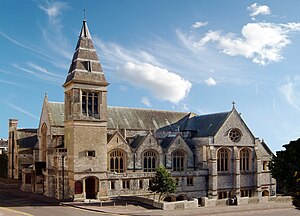H/t for the photo to:- http://stjosephdetroit.blogspot.co.uk/
The practice of
dedicating the month of May to our Lady was popularized especially by the
Rosary Encyclicals of Leo XIII – beginning in 1883 and concluding in 1889, the
Pontiff wrote twelve encyclicals and five apostolic letters on the Rosary. The
Catholic Encyclopedia discusses the rather recent origin of Mary Month:
“The May devotion [to
our Lady] in its present form originated at Rome where Father Latomia of the
Roman College of the Society of Jesus, to counteract infidelity and immorality
among the students, made a vow at the end of the eighteenth century to devote
the month of May to Mary. From Rome the practice spread to the other Jesuit
colleges and thence to nearly every Catholic church of the Latin rite (Albers,
"Bluethenkranze", IV, 531 sq.). This practice is the oldest instance
of a devotion extending over an entire month.” (Catholic Encyclopedia, “Special
Devotions for Months”)
Yet, although many
Catholics know that May is dedicated to the Mother of God, it may be a bit of a
puzzle as to why May was chosen for this special honor. What is it about May
that makes it suited to be the Month of Mary?
Mary Month – Why May?
Some have pointed to the
fact that, in classic western culture (both Greek and Roman), May was
recognized as the season of the beginning of new life. In the Greek world, May
was dedicated to the goddess Artemis and associated with fecundity. Roman
culture linked the month of May to Flora, the goddess of bloom and blossoms –
this led to the custom of ludi florales
(or floral games) which took place at the very end of April as a preparation
for entering into the month of May.
It seems that this
ancient tradition of connecting May with new life and fecundity, led to a
realization that May is very much the month of motherhood – this may be the
reason why Mother’s Day is celebrated during May not only in the United States
but in many countries and cultures of both the East and the West. In the month
of May, the winter comes to an end and the spring season begins (this was the
official beginning of spring in Roman culture). This new beginning and new
birth is a testimony to the motherhood of Mother Earth.
The connection between
motherhood and May led Christians eventually to adopt May as Mary Month. May
is the Month of our Lady precisely as the Mother of God. So wrote the
priest-poet Fr. Gerard Manley Hopkins, SJ in his marian classic “May Magnificat.”
May Magnificat
MAY is Mary’s month, and
I
Muse at that and wonder
why:
Her feasts follow reason,
Dated due to season—
Candlemas, Lady Day;
But the Lady Month, May,
Why fasten that upon her,
With a feasting in her honour?
Is it only its being
brighter
Than the most are must
delight her?
Is it opportunest
And flowers finds soonest?
Ask of her, the mighty mother:
Her reply puts this
other
Question: What is Spring?—
Growth in every thing—
Flesh and fleece, fur
and feather,
Grass and greenworld all
together;
Star-eyed strawberry-breasted
Throstle above her nested
Cluster of bugle blue
eggs thin
Forms and warms the life
within;
And bird and blossom swell
In sod or sheath or shell.
All things rising, all
things sizing
Mary sees, sympathising
With that world of good,
Nature’s motherhood.
Their magnifying of each
its kind
With delight calls to
mind
How she did in her stored
Magnify the Lord.
Well but there was more
than this:
Spring’s universal bliss
Much, had much to say
To offering Mary May.
When drop-of-blood-and-foam-dapple
Bloom lights the
orchard-apple
And thicket and thorp are merry
With silver-surfèd cherry
And azuring-over
greybell makes
Wood banks and brakes
wash wet like lakes
And magic cuckoocall
Caps, clears, and clinches all—
This ecstasy all through
mothering earth
Tells Mary her mirth
till Christ’s birth
To remember and exultation
In God who was her salvation.
The poem was written at Stonyhurst in May, 1878. Fr. Hopkins
was 33 at the time, and eight months a priest.












